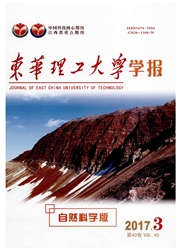

 中文摘要:
中文摘要:
卫境岩体位于中亚造山带东南部,紧邻华北板块北缘。通过对查干哈达地段的岩石样品进行系统的岩相学分析、电子探针分析、全岩主量元素分析,表明查干哈达地段的铀矿化为典型的碱交代型。钻孔中花岗岩蚀变整体以碱性蚀变为主;矿化的花岗岩中钾长石含量明显减少,钠长石化明显,并伴有绿泥石化及赤铁矿化。主量元素显示新鲜花岗岩的Al_2O_3,Fe O*,CaO,TiO_2含量与SiO_2含量有较明显的负相关性;矿化花岗岩呈现出明显的富Na_2O,CaO,P_2O_5,贫SiO_2,K_2O等特征,K_2O被Na_2O完全交代,SiO_2含量大量减少。深部钻孔铀矿化严格受碱交代体控制,这一特征可作为今后本区的寻找碱交代型铀矿化的重要标志。
 英文摘要:
英文摘要:
Weijing Pluton is located in the southeast of the Central Asian orogenic belt ( CAOB ) and adjacent to the north margin of the North China Craton (NCC). Petrography, EMPA analyses and major elements analyses of Chaganhada samples indicate that study area develops alkali metasomatism type uranium mineralization. Alkaline alteration play a major role in the drill hole, and present a unique distribution characteristic, which is called "acid under alkali" ; K-Feldspar in mineralized granites reduce significantly, accompanied by chloritization and hematization. Major elements analyses of fresh granites display a positive correlation between Al2O3, FeO * , CaO, TiO2 contents with SiO2 contents, mineralized granites are all enriched in Na20, CaO, P2O5, and depleted in SiO2 ,K2O. Uranium mineralization in deep driU hole is subject to alkaline alteration position, which can be an important indicator for uranium exploration.
 同期刊论文项目
同期刊论文项目
 同项目期刊论文
同项目期刊论文
 期刊信息
期刊信息
